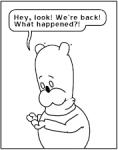A Theory of Fun For Game Design (Book Review)

A Theory of Fun For Game Design
Have you ever wondered what makes games fun? Sure, you can talk about how you enjoy the challenge or the novelty, but what makes those things fun? What does “fun” mean, anyway? In A Theory of Fun For Game Design, Raph Koster tries to answer the fundamental question of how games work by defining “fun” itself. Though his background is in video games, he finds common ground with everything from sports to role-playing.
According to Koster, games appeal to us because our brain rewards us for learning new things. Games present a structured, learnable system, in effect providing us a lesson that can later be applied to our more complex reality. In fact, Koster takes this to its logical extreme, saying that games are part of the same medium as training drills and school. “Fun is just another word for learning”, and if we don’t normally perceive learning as fun, that is more a failure of school lessons than with the medium itself. After all, our brains are wired to want to learn.
It’s a compelling theory, as figuring out new challenges is a fundamental part of games and it explains why a game will not be fun for someone if it is too simple or too complex for them. Koster builds up this point with a breezy description of cognitive theory, throwing around terms like chunking and explaining levels of consciousness to quickly lay a foundation for the way he sees our relationship to games. This simple style is complemented by the cartoons that are found on every even page. They help the book fly by, partly because those pages read so quickly, and partly because they make it so easy for the reader to peak ahead and suddenly become committed to the next page. They also are effective at driving home Koster’s points; Whether it’s his game design experience or understanding of cognitive theory, he knows that using a second source to repeat a point to a reader will make it much easier to accept.
